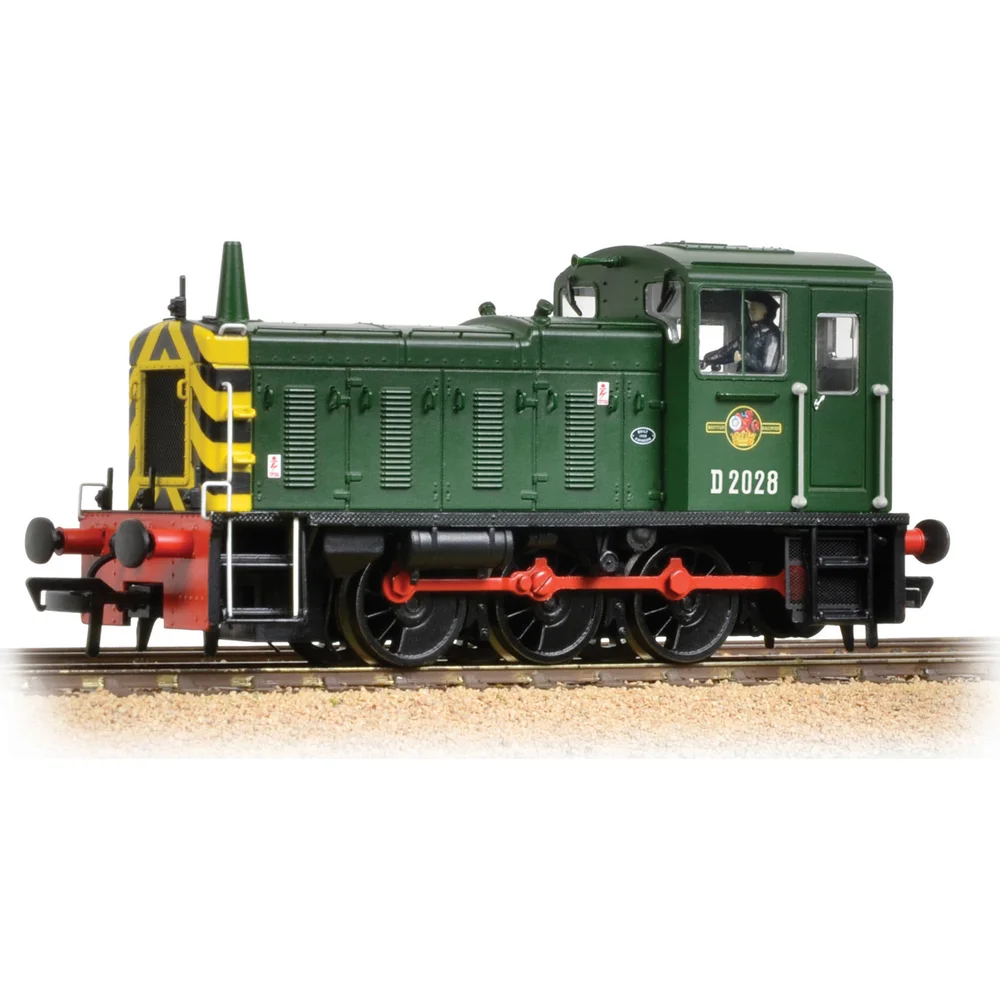Bachmann 31-361B
British Rail Class 03 D2028 British Railways Green with Late Crest
Class & Prototype
- Class: British Rail Class 03
- Traction: Diesel
- Transmission: Mechanical
- Built: 1957-1961
- Total Built: 230
The BR Class 03 was British Railways' standard light diesel-mechanical shunter, with 230 built at Doncaster and Swindon Works between 1957-1962. Powered by the legendary Gardner 8L3 engine and featuring distinctive jackshaft drive with coupling rods, these 30-ton locomotives excelled on weight-restricted lines, docks, and industrial sidings where heavier Class 08s couldn't operate. Notable variants included nine cut-down cab examples for the Burry Port & Gwendraeth Valley Railway and two for Isle of Wight tunnel clearance. With 56 preserved (24% survival rate) and the last example working until 2008, the Class 03 remains popular with heritage railways and modellers alike.
No prototype found.
Operator & Livery
- Operator: British Railways
- Livery: Green with Late Crest
British Railways transformed Britain's fragmented rail network into a unified national system following nationalisation on 1st January 1948. Created from the "Big Four" companies under the Transport Act 1947, BR operated most of Great Britain's railways until rebranding as British Rail in 1965, managing over 20,000 route miles and inheriting nearly 20,000 locomotives of diverse designs.
The organisation pioneered standardisation through its revolutionary BR Standard locomotive programme (1951-1960), producing 999 advanced steam engines under Robert Riddles' direction. These included the versatile Britannia Pacifics, mighty 9F freight engines, and mixed-traffic classes that incorporated the best features from all predecessor companies. The 1955 Modernisation Plan accelerated diesel and electric traction development, creating fascinating mixed-traction operations.
Notable achievements included establishing unified locomotive classification systems, introducing distinctive corporate liveries, and managing the complex transition from steam to modern traction. BR's six regional structure preserved operational diversity whilst enabling standardisation of practices, signalling, and rolling stock that had eluded private enterprise for over a century.
The BR era represents steam traction's final flowering alongside emerging diesel technology, creating unparalleled locomotive variety. Today, this heritage remains highly popular with railway enthusiasts through extensive preserved fleets, heritage railway operations, and comprehensive model ranges from manufacturers like Hornby, Bachmann, and Dapol, making BR subjects essential for authentic post-war British railway modelling across all scales.
